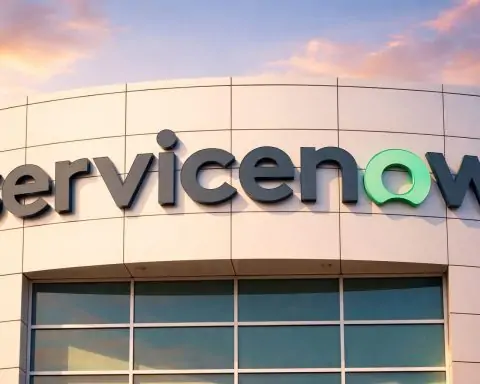Tesla, Inc. (NASDAQ: TSLA) is trading higher in early U.S. hours on Wednesday, November 26, 2025, as investors weigh Elon Musk’s latest robotaxi expansion pledge against a deepening slowdown in the company’s core vehicle business across Europe, China and the U.S. [1]
Tesla stock price today: modest pre-market gain after volatile stretch
Tesla shares closed Tuesday at $419.40, up about 0.5% on the day after trading between $405.95 and $420.48, with roughly 71.6 million shares changing hands. [2]
In Wednesday’s pre-market session, TSLA has been quoted around the mid‑$420s, roughly 1–1.5% above Tuesday’s close, according to Nasdaq and other real-time feeds. [3]
Fresh institutional research from MarketBeat notes that Tesla opened today’s session at $419.40, implying a market capitalization of about $1.39 trillion. The stock is trading on a price-to-earnings ratio near 280 and a P/E-to-growth (PEG) ratio above 16, underscoring how much future growth and profitability are already priced in. [4]
Other key metrics highlighted in recent data:
- 12‑month range: roughly $214–$489 per share [5]
- 50‑day moving average: around $434, versus a 200‑day moving average near $367—showing how strong the 2025 rally has been despite recent volatility [6]
- Balance sheet: very low debt‑to‑equity (~0.07) and solid liquidity with a current ratio above 2.0 [7]
In earnings terms, Tesla reported Q3 2025 revenue of about $28.1 billion, up roughly 11–12% year over year, but with only mid‑single‑digit net margins, a far cry from peak pandemic-era profitability. [8]
Main catalyst today: Austin robotaxi fleet to “roughly double” in December
The headline story driving Tesla stock this morning is Elon Musk’s announcement that Tesla will double its robotaxi fleet in Austin, Texas, next month.
In a post on X (formerly Twitter) on Tuesday, Musk said the “Tesla Robotaxi fleet in Austin should roughly double next month.” Reuters reports that the expansion will come in December, about six months after Tesla launched the self-driving service in the city. [9]
Key details from today’s coverage:
- Tesla’s robotaxi service currently operates in two U.S. cities: Austin and the San Francisco Bay Area, and still requires safety monitors inside the vehicles. [10]
- The company has also secured a permit to operate ride-hailing services in Arizona, laying the groundwork for a broader rollout. [11]
- Musk has previously said he expects robotaxis to operate without safety drivers in large parts of Austin by the end of 2025, and has floated plans to reach 8–10 major U.S. metropolitan areas over time. [12]
- Demand in Austin has been strong enough that some early users have described the service as “essentially unusable” because of long wait times—another reason why doubling the fleet matters, according to Business Insider’s reporting today. [13]
Financial media from Barron’s, The Wall Street Journal and others all highlight the same theme: robotaxi expansion is the positive narrative offsetting an increasingly negative backdrop for Tesla’s traditional car business. [14]
For equity investors, the Austin news reinforces the idea that Tesla is positioning itself less as a car company and more as an AI and autonomy platform—a view echoed by several bullish analysts who see robotaxis and humanoid robots as the long-term drivers of a potential multi‑trillion‑dollar valuation. [15]
The uncomfortable backdrop: Tesla’s vehicle sales are sliding worldwide
Against the robotaxi hype, today’s most sobering story comes from Reuters: “Tesla struggles to course correct from sales skid.” [16]
According to the report and data compiled from industry associations and Visible Alpha:
- Europe: Tesla’s sales across Europe fell 48.5% in October versus the same month last year, even as overall EV sales in the region rose 26%. Year‑to‑date, Tesla’s European sales are down about 30%. [17]
- China: Deliveries in China dropped to a three‑year low in October, and are down around 8.4% year‑to‑date, with rivals such as BYD and Xiaomi gaining share. [18]
- United States: After a tax‑credit‑fuelled surge in September, U.S. sales fell about 24% in October, according to Motor Intelligence data cited by Reuters and TipRanks. [19]
- Global deliveries: Consensus estimates compiled by Visible Alpha suggest Tesla’s global vehicle deliveries will fall about 7% in 2025, following a 1% decline in 2024—despite Q3’s record delivery numbers. [20]
Analysts quoted in today’s coverage point to a few structural issues:
- Aging lineup: Tesla still relies on essentially two mass‑market models—Model 3 and Model Y—just as European and Chinese competitors bring dozens of newer EVs to market. [21]
- Intense price competition: Europe already offers more than a dozen EVs under $30,000, while Tesla’s offerings remain pricier even after recent cuts. [22]
- Stiff competition from BYD and VW: In October, BYD sold more than double Tesla’s volume in Europe, while Volkswagen’s EV sales through September were roughly triple Tesla’s in the region. [23]
The same Reuters analysis notes that Musk had once talked about 20–30% vehicle sales growth in 2025, but that guidance has quietly disappeared. The company now says growth will depend heavily on macro conditions and the speed at which it can deploy autonomy and ramp production in existing factories. [24]
In short, Tesla’s core car business is shrinking in all three of its biggest markets at the same time—a rare and worrying combination for a high‑multiple growth stock.
Supply chain and geopolitics: Tesla reassures Chinese suppliers
Another important piece of Tesla news today comes from Shanghai. In response to a Wall Street Journal report that Tesla had asked suppliers to avoid China-made components in U.S. vehicles, Tesla China vice president Grace Tao publicly pushed back. [25]
In a statement posted on Weibo and reported by Reuters:
- Tao said Tesla “values the role of China-based suppliers” and does not exclude companies based on country of origin or geography. [26]
- She emphasized that Tesla applies the same strict supplier standards in the U.S., China and Europe, focusing on quality and cost rather than location. [27]
- Tesla’s Shanghai plant works with over 400 domestic suppliers, more than 60 of which also serve Tesla globally, allowing the company to offer some of its lowest Model 3 and Model Y prices in China—with more than 95% of parts sourced locally. [28]
The timing is significant. General Motors has recently asked thousands of suppliers to remove Chinese parts from their supply chains, as Western automakers rethink dependencies amid tariff and security concerns. [29]
By contrast, Tesla is signalling that it plans to keep China deeply embedded in its global supply chain, even while public policy pressure in the U.S. pushes in the opposite direction. For investors, this underscores both:
- The cost advantage Tesla derives from China, and
- The geopolitical risk if U.S.–China tensions escalate further.
New push in India: high prices, low running costs
Tesla is also working hard to justify its pricing in India, where the company formally entered the market earlier this year.
In a Reuters report today, Tesla’s India general manager Sharad Agarwal said the company expects buyers of the Model Y (priced around 6 million rupees, or about $67,000) to recoup roughly one‑third of the purchase price over four to five years through lower fuel and maintenance costs. [30]
Key points from that story:
- The Model Y’s price in India is roughly 70% higher than in the U.S., mainly because of India’s 100% import tariff on fully built cars. [31]
- Tesla estimates Indian customers could save around 2 million rupees (~$22,000) on fuel and upkeep versus a comparable petrol vehicle over several years, especially if they charge mostly at home. [32]
- Combined with high expected resale values, Tesla argues the total cost of ownership narrows the gap with local alternatives for higher‑income buyers. [33]
This India messaging—heavily recycled across international editions of Yahoo Finance and other outlets today—fits into Tesla’s broader effort to shift the conversation away from sticker price and toward lifecycle economics. [34]
Analyst reaction: “Must‑own” AI name vs. cautious consensus
On Wall Street, opinion on Tesla remains sharply divided—and today’s news flow captures that split.
Mizuho: deliveries hit in 2026, but still upside
A new note summarized by TipRanks this morning explains why Mizuho Securities trimmed its Tesla price target while warning of a hit to EV deliveries in 2026 and 2027: [35]
- Mizuho expects subsidy cuts in both the U.S. and China to pressure Tesla’s volumes.
- The firm now projects 1.75 million deliveries in 2026 and 2.0 million in 2027, below broader Street forecasts of 1.82 million and 2.15 million, respectively. [36]
- Despite this, Mizuho only trimmed its price target slightly—from $485 to $475—still implying double‑digit upside from current levels. [37]
Melius: Tesla as a “must‑own” autonomy and AI play
At the other end of the spectrum, Melius Research—via a widely shared note amplified on Finviz and InsiderMonkey today—reiterated Tesla as a “Buy” and a “must‑own” stock, largely on the strength of Full Self‑Driving version 14.1.7 (FSD v14): [38]
- Melius analyst Rob Wertheimer argues that “autonomy is coming very soon” and that it will dramatically reshape the driving ecosystem, shifting “hundreds of billions in value” from legacy automakers to Tesla over the next five years. [39]
- The firm points to Tesla’s vision‑only FSD approach and large AI compute investments as key moats that rivals aren’t matching. [40]
- Other firms, such as Piper Sandler, have recently praised FSD v14 as driving better than the average human in some scenarios after their own road tests. [41]
Consensus: still a Hold, targets below the current price
Despite the bulls, most aggregated data still paints a cautious picture:
- TipRanks and other platforms show a “Hold” consensus, with around 14 Buys, 10 Holds and 10 Sells over the last three months. [42]
- Across several sources, the average 12‑month price target for TSLA sits around $380–$395, which is roughly 8–10% below where the stock is trading today. [43]
- MarketBeat’s compilation of broker research today reiterates that overall rating as “Hold,” with a consensus target near $394. [44]
In other words, Wall Street on average thinks Tesla is slightly ahead of itself, even though several high‑profile bulls still forecast substantial upside if robotaxis and robotics deliver as promised. [45]
Institutional moves: mixed signals from 13F filings
A cluster of new 13F filings and institutional‑ownership updates published today adds nuance to the sentiment picture:
- Echo45 Advisors LLC cut its Tesla position by about 28% in Q2, ending the quarter with 1,606 shares valued around $510,000. [46]
- Choreo LLC trimmed its stake by 2.9%, to 78,931 shares worth roughly $25 million, and MarketBeat highlights recent insider selling by Tesla executives over the past 90 days. [47]
- North Star Asset Management reduced its holdings by 62.8%, down to 1,911 shares—another sign that some long‑time holders have been de‑risking into strength. [48]
- On the other side, Strategy Capital LLC actually increased its Tesla stake by 4.5% in Q2 to 159,480 shares, making TSLA its 10th‑largest position at about 3.4% of its portfolio. [49]
MarketBeat estimates that around two‑thirds of Tesla’s free float (about 66%) is held by institutions and hedge funds, even as insider ownership remains close to 20%. [50]
The takeaway: institutional investors are far from unanimous—some are locking in gains or rebalancing, while others are leaning in as the AI and robotaxi story gathers momentum.
How the pieces fit together for Tesla stock today
Putting all of today’s threads together, Tesla’s setup on November 26, 2025 looks something like this:
Bullish drivers highlighted in today’s news
- Robotaxi expansion: Doubling the Austin robotaxi fleet in December and expanding permits in Arizona reinforces the idea that Tesla is serious about scaling autonomous ride‑hailing, not just talking about it. [51]
- FSD v14 momentum: Positive commentary from Melius, Piper Sandler and others about FSD v14 suggests real technical progress that could justify Tesla’s positioning as an AI/autonomy platform rather than a simple automaker. [52]
- Strong balance sheet and liquidity: Low leverage and healthy cash ratios give Tesla more room to invest through a downturn than many rivals. [53]
- Global brand and new markets: Ongoing pushes into India and deeper integration with European charging networks (via deals like Edenred’s) underscore Tesla’s still‑formidable global brand reach. [54]
Bearish and cautionary factors
- Sharp sales declines in core markets: A near 50% drop in European sales in October, weaker China volumes, and a reversal in U.S. growth leave Tesla fighting on three fronts simultaneously. [55]
- Aging product lineup: With no clear mass‑market “Model 2” on the near‑term horizon, Tesla’s current range risks falling further behind a flood of newer, cheaper EVs. [56]
- Policy risk: Subsidy cuts in the U.S. and potential reductions in China could further pressure EV demand, a risk explicitly flagged by Mizuho today. [57]
- Valuation: With a P/E near 280 and most consensus price targets below the current share price, Tesla leaves little room for execution missteps. [58]
- Geopolitical exposure: Heavy reliance on China‑based suppliers keeps costs low but ties Tesla to a politically sensitive supply chain that could be disrupted by future trade policy shifts. [59]
What to watch next
While today’s article focuses on news dated November 26, 2025, several upcoming catalysts will likely shape Tesla’s trajectory from here:
- December 2025: Actual rollout of the expanded Austin robotaxi fleet, plus early ridership and safety data. [60]
- Early 2026:
- Policy developments: Further clarity on EV subsidies in the U.S. and China, which analysts like Mizuho see as crucial for 2026–2027 volumes. [63]
For now, Tesla stock is being pulled in two directions:
- Upwards by a compelling autonomy/AI narrative and continued robotaxi milestones;
- Downwards by hard sales data showing shrinking volumes in its core vehicle business.
How that tension resolves will likely determine whether today’s pre‑market strength marks the start of a new leg higher—or just another bounce in an increasingly volatile journey.
References
1. www.reuters.com, 2. stockinvest.us, 3. www.marketwatch.com, 4. www.marketbeat.com, 5. www.marketbeat.com, 6. www.marketbeat.com, 7. www.marketbeat.com, 8. www.google.com, 9. www.reuters.com, 10. www.reuters.com, 11. www.reuters.com, 12. www.reuters.com, 13. www.businessinsider.com, 14. www.barrons.com, 15. www.morningstar.com, 16. www.reuters.com, 17. www.reuters.com, 18. www.reuters.com, 19. www.reuters.com, 20. www.reuters.com, 21. www.reuters.com, 22. www.reuters.com, 23. www.reuters.com, 24. www.reuters.com, 25. www.reuters.com, 26. www.reuters.com, 27. www.reuters.com, 28. www.reuters.com, 29. www.reuters.com, 30. www.reuters.com, 31. www.reuters.com, 32. www.reuters.com, 33. www.reuters.com, 34. finance.yahoo.com, 35. www.tipranks.com, 36. www.tipranks.com, 37. www.tipranks.com, 38. finviz.com, 39. finviz.com, 40. finviz.com, 41. finviz.com, 42. www.tipranks.com, 43. www.marketbeat.com, 44. www.marketbeat.com, 45. finance.yahoo.com, 46. www.marketbeat.com, 47. www.marketbeat.com, 48. www.marketbeat.com, 49. www.marketbeat.com, 50. www.marketbeat.com, 51. www.reuters.com, 52. finviz.com, 53. www.marketbeat.com, 54. www.reuters.com, 55. www.reuters.com, 56. www.reuters.com, 57. www.tipranks.com, 58. www.marketbeat.com, 59. www.reuters.com, 60. www.reuters.com, 61. www.reuters.com, 62. www.marketbeat.com, 63. www.tipranks.com







